As someone who has struggled with belly fat, affectionately referred to as the “dad bod” or the “family pack” (whichever term you prefer!), I have often found myself wondering if there is an effective way to shed those extra pounds. The emotional toll of carrying around excess weight can be daunting, affecting both self-esteem and overall quality of life. That’s when I delved into research, determined to find a solution that would not only help me burn belly fat but also provide other health benefits.
After extensive exploration, I discovered that hiking can be an incredibly effective way to tackle belly fat and improve overall well-being. This realization brought a renewed sense of hope and motivation to my life. The mere thought of stepping onto picturesque trails, immersing myself in nature’s embrace, and embarking on thrilling adventures infused me with excitement and anticipation. The physical exertion and tranquility of hiking created a unique blend of joy and serenity, helping me escape the stress and monotony of everyday life.
Quick Answer: The answer is YES. Hiking is a form of cardio exercise that can help you burn calories and lose fat. In fact, hiking can be more effective than other low-intensity exercises, such as walking, because it engages more muscles and requires more effort. But how exactly does hiking burn belly fat? Let’s find out.

In this article, let’s explore the relationship between hiking and belly fat loss.
Belly fat, also known as visceral fat, is the fat that accumulates around your midsection and internal organs. It is linked to many health problems, including diabetes, heart disease, and stroke. Losing belly fat is not just about looking good, but also about improving your overall health.
Hiking is a great way to burn calories and fat, including belly fat. In fact, “Is Hiking an Aerobic Exercise: A Clear Answer?” it’s considered an aerobic exercise, which means it helps your body use oxygen more efficiently, which can help you burn more calories.
Key Takeaways
- Hiking can be an effective way to burn belly fat and improve overall health.
- Belly fat is linked to many health problems, including diabetes and heart disease.
- Hiking engages more muscles and requires more effort than walking, making it a more effective exercise for burning belly fat.
What Is Belly Fat?
As I research the question of whether hiking burns belly fat, it’s important to first understand what belly fat is.
When it comes to belly fat, it’s important to understand the different types and their potential impact on our health. Belly fat, also known as abdominal fat or visceral fat, is a type of body fat that accumulates in the abdominal area. It can be categorized into two main types: subcutaneous fat and visceral fat.
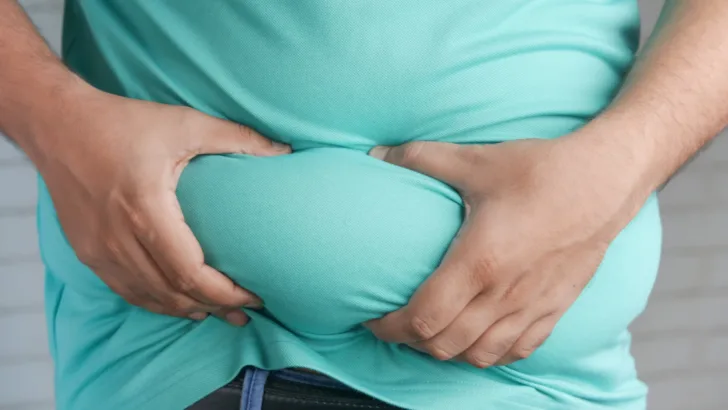
Subcutaneous fat is the fat that lies just beneath the skin. It’s the fat that we can often pinch with our fingers. While subcutaneous fat may not pose immediate health risks, it can contribute to a larger waistline and affect our appearance.
On the other hand, visceral fat is the fat that is located deeper within the body, surrounding our vital organs such as the liver, pancreas, and intestines. Unlike subcutaneous fat, visceral fat is more concerning due to its association with various health problems. Excess visceral fat has been linked to an increased risk of heart disease, type 2 diabetes, certain types of cancer, and other chronic conditions.
The accumulation of belly fat can be influenced by several factors. Genetics can play a role, as some individuals may be genetically predisposed to storing more fat in the abdominal area. However, lifestyle choices also contribute significantly. Poor diet, lack of physical activity, and high levels of stress can all contribute to the development of excess belly fat.
Incorporating regular physical activity, such as hiking, is a great strategy for reducing belly fat. Hiking is an enjoyable outdoor activity that provides both cardiovascular exercise and an opportunity to engage with nature. It helps burn calories, improve cardiovascular health, and strengthen muscles throughout the body, including the core.
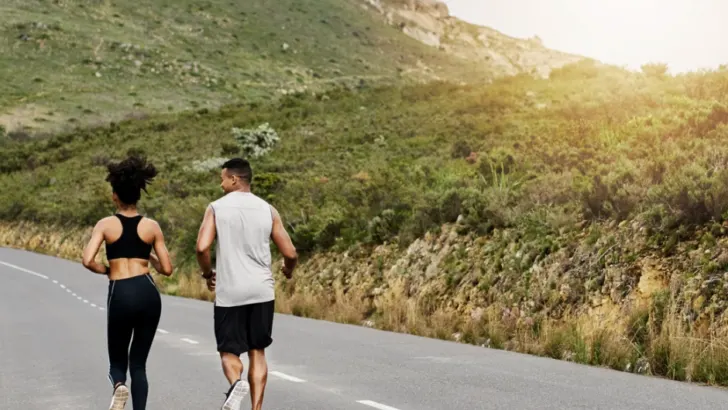
When hiking, the uneven terrain and varying inclines engage different muscle groups, helping to increase overall calorie expenditure and promote fat burning. Additionally, the fresh air and natural surroundings can have a positive impact on mental well-being, reducing stress levels and potentially lowering cortisol, a hormone associated with belly fat accumulation.
To further reduce overall body fat and potentially diminish belly fat, it’s crucial to adopt a comprehensive approach to lifestyle changes. Along with hiking, incorporating strength training exercises can help build lean muscle mass, which in turn can increase metabolism and facilitate fat loss. Moreover, practicing stress management techniques and adopting healthy coping mechanisms can support the reduction of stress-related cortisol levels, which may contribute to abdominal fat accumulation.
Prioritizing sleep and maintaining a well-balanced diet rich in whole foods, lean proteins, fruits, vegetables, and whole grains can also support overall weight loss and help reduce belly fat over time. By combining these strategies with regular hiking and other forms of physical activity, you can create a holistic and effective approach to burning calories, improving body composition, and achieving a healthier lifestyle.

While targeting belly fat directly may be challenging, making sustainable lifestyle changes that focus on overall fat reduction, including engaging in activities like hiking, can positively impact our health and gradually lead to a reduction in abdominal fat. Remember, consistency and enjoyment are key when it comes to achieving long-term weight loss goals and promoting a healthier body composition.
Aerobic exercise, such as hiking, has been shown to help people lose weight and belly fat. In one study, people who hiked for 30 minutes 3 times per week for 12 weeks lost an average of 3.5 pounds of body weight and 1.7 inches from their waist circumference.
“Is Hiking an Aerobic Exercise: A Clear Answer?” for more information on how hiking can help you burn calories and belly fat.
In the next section, let’s explore how hiking can help with fat loss and potentially lead to a reduction in belly fat.
Why Is Belly Fat Bad?
As someone who has struggled with belly fat in the past, I can tell you that it’s not just about the way it looks. Belly fat, also known as visceral fat, is the fat that accumulates around your organs in the abdominal cavity. This type of fat is linked to a number of health problems, including:
- Increased risk of heart disease and stroke
- Higher levels of inflammation in the body
- Insulin resistance and type 2 diabetes
- Higher risk of certain types of cancer
- Sleep apnea and other breathing problems
In addition to the significant health risks associated with belly fat, its impact extends beyond just physical well-being. The presence of excess belly fat can have various adverse effects on your quality of life.
One noticeable aspect is the challenge of finding clothes that fit properly. Belly fat can alter your body shape and make it more difficult to find clothing options that flatter your figure. Often, individuals with belly fat struggle with pants that fit around the waistline or shirts that cling uncomfortably to the abdomen. This can lead to frustration and a decreased sense of confidence when it comes to choosing and wearing clothes.

Moreover, the presence of belly fat can contribute to feelings of self-consciousness about one’s appearance. It’s common to be concerned about how others perceive our bodies, and excess abdominal fat can exacerbate those insecurities. This self-consciousness may affect social interactions, causing individuals to avoid certain activities or social gatherings due to a lack of confidence in their appearance. It’s essential to prioritize self-acceptance and focus on overall health rather than solely relying on external perceptions.
Belly fat can also impact mobility and hinder everyday activities. Tasks that once seemed effortless, like bending over to pick something up or tying your shoes, can become more challenging. The additional weight around the midsection can strain the lower back, making movements more cumbersome and uncomfortable. This can impede one’s ability to engage in physical activities or perform simple tasks, potentially leading to a decline in overall quality of life.
Addressing belly fat through various lifestyle changes, including regular physical activity such as hiking, can help mitigate these challenges. By reducing excess fat around the abdomen, individuals may find it easier to shop for well-fitting clothes, enhancing their confidence and overall satisfaction with their appearance. Furthermore, shedding belly fat can improve mobility, making everyday activities more manageable and reducing the discomfort associated with simple movements.
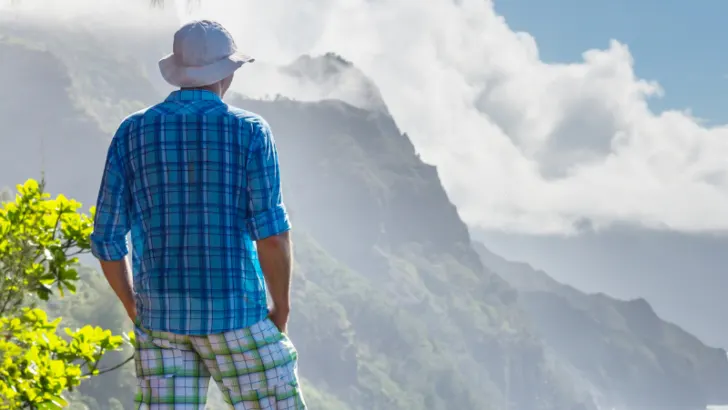
It’s important to remember that the impact of belly fat on quality of life extends beyond the physical realm. While the health risks are significant, addressing the emotional and social consequences is equally important. By adopting a holistic approach that encompasses both physical and mental well-being, individuals can work towards a healthier body composition, increased confidence, and improved overall quality of life.
So, if you’re wondering whether hiking can help you burn belly fat, the answer is yes. But it’s not just about the way you look – reducing belly fat can have a positive impact on your overall health and well-being.
Does Hiking Burn Belly Fat?
As an avid hiking enthusiast, I understand the curiosity surrounding the potential benefits of hiking when it comes to burning belly fat. After conducting thorough research and analyzing the available information, I can confidently affirm that hiking can indeed serve as an effective method for targeting and burning belly fat.
Hiking, classified as a cardiovascular exercise, has the capacity to burn calories and aid in shedding excess weight. Engaging in a hiking session translates into a comprehensive full-body workout that specifically targets multiple muscle groups, including the crucial core muscles.

By involving your core during hiking, you actively engage muscles such as the rectus abdominis, obliques, and transverse abdominis. The continuous effort required to navigate various terrains and handle changes in elevation demands the stabilization of your body, resulting in a notable workout for your core.
While hiking proves beneficial for toning abdominal muscles, it is essential to recognize that relying solely on hiking may not be sufficient to effectively burn belly fat. To achieve significant weight loss and attain optimal fat-burning results, a holistic approach integrating hiking with a nutritious diet and other forms of exercise is crucial.
It is worth noting that the number of calories burned during a hiking session can vary depending on several factors. Your body weight, the type of terrain you traverse, and the speed at which you hike all contribute to the calorie-burning process. For instance, tackling uphill paths or rugged terrains demands increased effort, thereby resulting in a higher caloric expenditure compared to walking on flat ground.
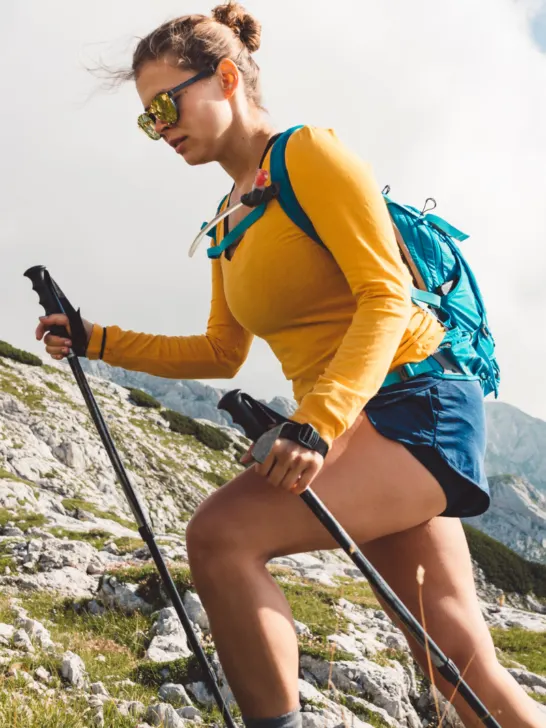
Additionally, should you opt to carry a backpack or any added weight, the intensity of your hike increases, allowing for the potential to burn even more calories.
In conclusion, hiking can serve as a valuable and effective means of burning belly fat and facilitating overall weight loss. However, it is essential to supplement your hiking routine with a healthy diet and incorporate other forms of exercise into your regimen for optimal results.
By incorporating hiking into your fitness routine and making it a regular habit, you can relish the multitude of physical and mental benefits offered by this enjoyable outdoor activity. Embrace the wonders of hiking, and let it guide you towards a healthier, more fulfilled lifestyle.
How Hiking Burns Belly Fat
As someone who loves hiking, I have always been curious about how it affects my body. One question that often comes up is whether hiking can help burn belly fat. After doing some research and combining it with my own knowledge and experience, here’s what I found out.
The Science Behind Fat Burning
In order to grasp how hiking effectively burns belly fat, it’s important to delve into the mechanisms through which our bodies burn fat in general. When we engage in exercise, our bodies require energy to power our muscles. This energy can be sourced from the food we consume, as well as from stored fat within our bodies.
During physical activity, our bodies burn calories, leading to the subsequent burning of fat. Hiking, classified as a form of cardiovascular exercise, serves to elevate our heart rate and accelerate our breathing rate. This heightened demand for oxygen and energy prompts our bodies to expend more calories and tap into fat stores for fuel.
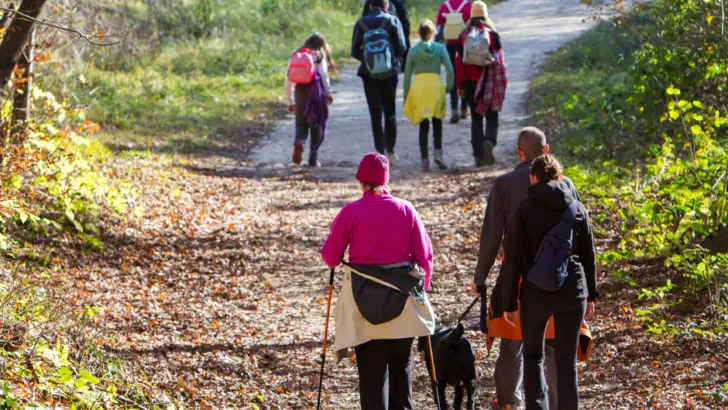
As we hike, our muscles are engaged in continuous movement, resulting in an increased energy expenditure. The combination of uphill climbs, downhill descents, and negotiating various terrains places varying demands on our bodies. These demands trigger the recruitment of different muscle groups, creating a comprehensive workout experience that contributes to calorie-burning and fat loss.
Moreover, hiking is known to be a weight-bearing exercise, meaning it places stress on our bones and muscles. This weight-bearing aspect of hiking stimulates the development of lean muscle mass. As we build lean muscle, our bodies become more efficient at burning calories, both during physical activity and at rest. With an increase in lean muscle mass, our metabolic rate is heightened, and we continue to burn calories even after our hiking session has concluded.
Additionally, hiking in natural environments provides a unique experience that can further enhance fat burning. The varying terrain, such as uneven paths or inclines, challenges our bodies to adapt and exert more effort. Negotiating these natural obstacles requires additional muscle engagement and energy expenditure, leading to increased calorie burning and fat utilization.
Furthermore, the duration and intensity of your hiking sessions play a crucial role in determining the amount of fat burned. Longer hikes and more vigorous exertion result in extended periods of elevated heart rate and increased calorie expenditure. By gradually increasing the duration and intensity of your hikes over time, you can maximize the fat-burning potential of this outdoor activity.
The Intensity Of Hiking And Fat Burning
The intensity at which we hike influences the extent to which fat is burned. When we engage in moderate-intensity hiking, a higher percentage of the calories burned are derived from fat, albeit fewer overall calories. Conversely, when we hike at a higher intensity, we burn a greater number of total calories, but a lower proportion of those calories originate from fat.
It is worth noting, however, that even when we hike at a lower intensity, we still experience calorie and fat burning. Therefore, if you are new to hiking or have physical limitations that restrict high-intensity activities, there is no need to fret. By opting for moderate-intensity hiking, you can still effectively burn belly fat.
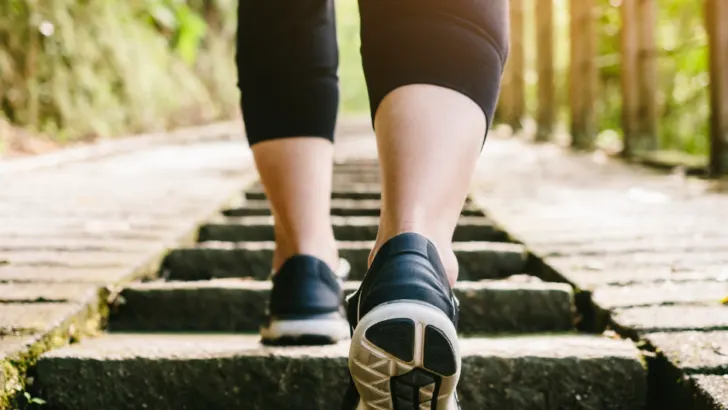
Hiking at a moderate intensity offers numerous benefits for fat-burning and overall fitness. Although the proportion of fat calories burned may be relatively lower, the total calorie expenditure remains significant. Consistent moderate-intensity hiking sessions can lead to a cumulative energy deficit, resulting in weight loss and reduction of belly fat over time.
Furthermore, moderate-intensity hiking offers a sustainable approach to physical activity. It is a form of exercise that can be easily incorporated into daily routines without excessive strain or risk of overexertion. By maintaining a steady pace during your hikes, you can ensure a prolonged duration of activity, maximizing the overall energy expended and contributing to fat burning.
Additionally, moderate-intensity hiking provides an excellent foundation for building cardiovascular endurance. By challenging yourself with longer distances or more challenging terrains over time, you can gradually increase the intensity of your hikes. This progressive approach allows your body to adapt and become more efficient at utilizing fat as a fuel source, ultimately promoting greater fat-burning during your hiking endeavors.
Moreover, hiking at a moderate intensity offers a multitude of mental and emotional benefits. The serene and natural surroundings, combined with rhythmic movement and fresh air, can alleviate stress, boost mood, and enhance overall well-being. These factors contribute to a positive mindset, making it easier to maintain regular hiking habits and sustain long-term fat loss goals.
That being said, even when we hike at a lower intensity, we are still burning calories and fat. So, if you’re new to hiking or have physical limitations, don’t worry – you can still burn belly fat by hiking at a moderate intensity.
The Duration Of Hiking And Fat Burning
The duration of your hiking excursion also plays a significant role in the amount of fat burned. It’s important to recognize that the longer we hike, the more calories and fat we can potentially burn. However, the benefits of hiking extend beyond the activity itself. When we engage in physical activity, our body continues to burn calories and fat for hours after we have completed the hike.
This post-hike fat-burning phenomenon is commonly referred to as the “afterburn effect” or excess post-exercise oxygen consumption (EPOC). After a hike, our body works to restore oxygen levels, repair tissues, and replenish energy stores. This restorative process requires additional calories and promotes the continued burning of fat. Therefore, even if you only have time for a short hike, you can still experience the benefits of post-exercise fat burning.
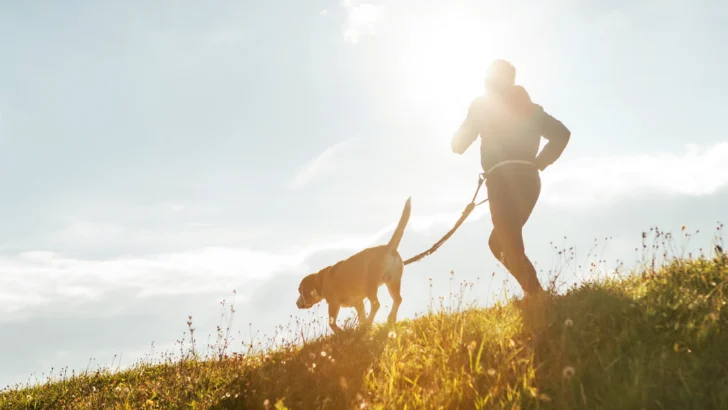
Of course, if you have the time and energy to embark on a longer hike, it can further amplify the calorie and fat-burning potential. Prolonged hiking sessions increase overall energy expenditure, resulting in greater depletion of glycogen (stored carbohydrates) and subsequent reliance on fat stores for fuel. This extended duration of activity creates a more substantial calorie deficit, contributing to enhanced fat-burning and weight loss.
It’s worth emphasizing that while longer hikes may offer increased opportunities for fat burning, every hike, regardless of duration, contributes to your overall calorie expenditure and can help reduce belly fat. Whether it’s a leisurely stroll in nature or an intensive trek up challenging terrain, every step you take contributes to your fitness goals.
In conclusion, hiking can undeniably contribute to burning belly fat. By engaging in moderate to high-intensity hikes for longer durations, you can maximize the number of calories and fat burned during the activity itself. However, it’s essential to recognize that even if your hiking time is limited or you need to maintain a lower intensity, you can still achieve significant fat-burning benefits.
The afterburn effect and the prolonged elevation of your metabolic rate post-hike ensure that calories and fat continue to be burned for an extended period. So, whether you have the opportunity for a lengthy hike or can only spare a short excursion, lace up your hiking boots, hit the trails, and embrace the transformative power of hiking for burning belly fat.
Benefits Of Hiking For Belly Fat
As someone who has struggled with belly fat, I know firsthand how challenging it can be to get rid of it. However, hiking has been a game-changer for me. Not only is it an enjoyable way to get outside and explore nature, but it also has numerous benefits for burning belly fat.
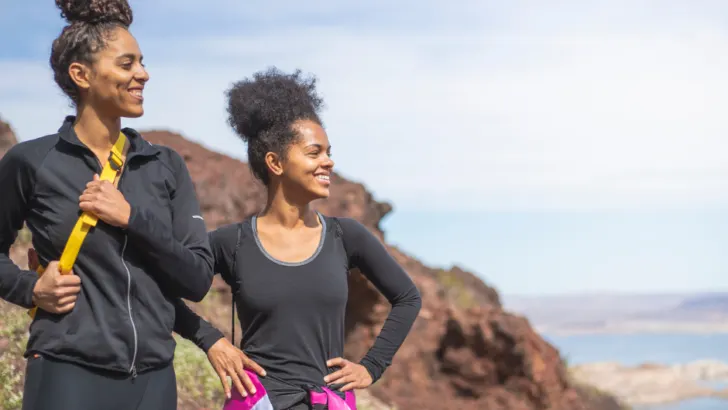
Increased Calorie Burn
One of the most significant benefits of hiking for belly fat is the increased calorie burn. Hiking is a low-impact exercise that can burn anywhere from 400 to 700 calories per hour, depending on factors such as your weight, the terrain, and the intensity of your hike. This calorie burn can help create a calorie deficit, which is necessary for losing belly fat.
Improved Insulin Sensitivity
Hiking can also improve insulin sensitivity, which is crucial for reducing belly fat. Insulin is a hormone that regulates blood sugar levels, and when we become insulin resistant, our bodies are less effective at using insulin, which can lead to weight gain, especially in the belly area. Hiking has been shown to improve insulin sensitivity, which can lead to better blood sugar control and reduced belly fat.
Reduced Inflammation
Inflammation is a common underlying factor in many chronic diseases, including obesity. Hiking can help reduce inflammation by increasing blood flow and oxygen delivery to our muscles and tissues. This increased blood flow can help flush out toxins and reduce inflammation, which can lead to a reduction in belly fat.
Increased Muscle Mass
Hiking is also an excellent way to build muscle mass, which can help burn belly fat. When we engage in physical activity that challenges our muscles, such as hiking uphill or carrying a backpack, we create small tears in our muscle fibers. These tears then repair themselves, leading to an increase in muscle mass. The more muscle mass we have, the more calories we burn at rest, which can lead to a reduction in belly fat.
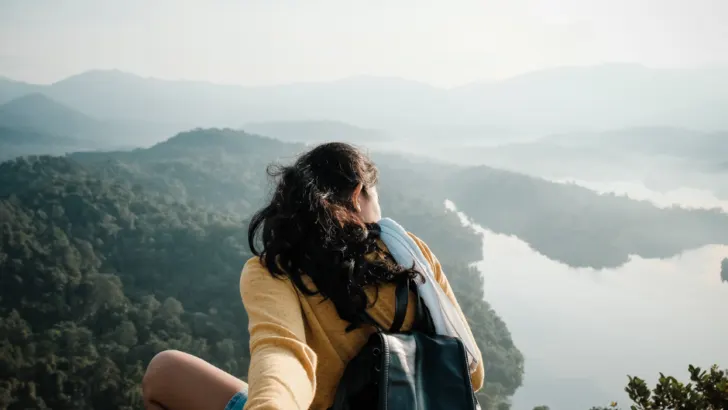
Overall, hiking is an effective way to burn belly fat. By increasing calorie burn, improving insulin sensitivity, reducing inflammation, and increasing muscle mass, hiking can help create a calorie deficit and lead to a reduction in belly fat. So, grab your hiking boots and hit the trails to start reaping the benefits for yourself!
Tips For Hiking For Belly Fat Loss
Losing belly fat can be a challenging task, but hiking can be an effective way to burn calories and shed those extra pounds. Here are some tips to help you get the most out of your hiking workouts and achieve your belly fat loss goals.
Set Realistic Goals
Setting realistic goals is a fundamental aspect of using hiking as a means to lose belly fat. It’s important to approach your fitness journey with patience and understanding, acknowledging that sustainable progress takes time. Begin by setting small, attainable goals and gradually increase the intensity and duration of your hikes as you progress.
By starting with manageable goals, you not only set yourself up for success but also minimize the risk of burnout or injury. Consider factors such as your current fitness level, available time, and physical capabilities when establishing your goals. For instance, you could start by committing to a couple of shorter hikes each week and gradually work your way up to longer, more challenging trails.
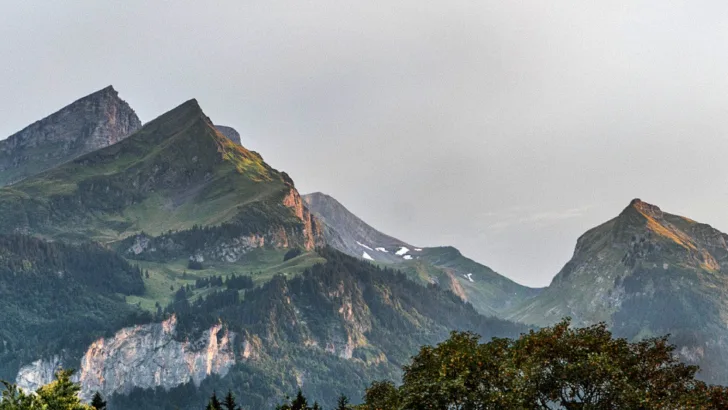
Remember, instant results are not the expectation when it comes to belly fat loss. It’s a gradual process that requires consistency, dedication, and patience. Stay focused on the long-term benefits and the positive changes that hiking brings to your overall health and well-being.
Along your journey, it’s essential to track your progress and celebrate milestones along the way. Keep a record of your hikes, noting the distance covered, the elevation gained, and the level of difficulty. This not only allows you to monitor your progress but also serves as a motivational tool, showcasing how far you have come.
Increase The Intensity Of Your Hikes
Increasing the intensity of my hikes has been a game-changer in my journey to shed that stubborn belly fat. I’ve discovered that by pushing myself and incorporating challenging elements into my hiking routine, I can elevate not only my heart rate but also my spirits.
One of my favorite strategies is seeking out trails with hills or inclines. When I conquer those uphill climbs, I feel an incredible sense of accomplishment. The burning in my leg muscles and the rapid beat of my heart reminds me that I’m pushing myself beyond my comfort zone. These uphill challenges have become opportunities for growth, both physically and mentally.
I’ve also embraced the power of interval training during my hikes. It’s exhilarating to alternate between periods of high intensity and more relaxed moments. During my high-intensity intervals, I give it my all, whether it’s picking up the pace, breaking into a jog, or even sprinting for short bursts. Not only do these intervals increase my calorie burn during the workout, but they also leave a lasting impact. I can feel my metabolism revved up, continuing to burn fat long after I’ve finished my hike.
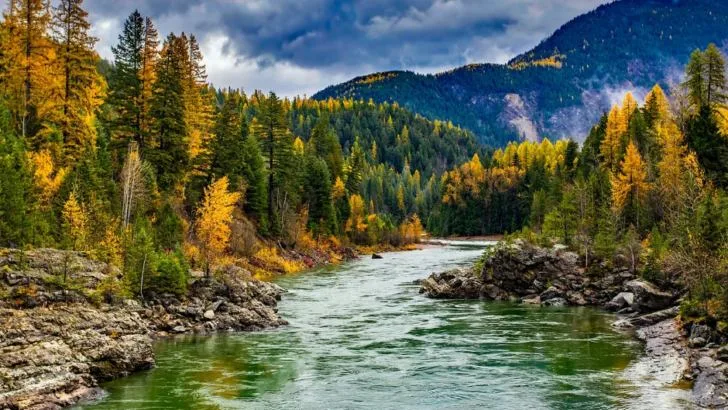
Carrying a backpack has become a trusty companion on my hiking adventures. I started with a modest load and gradually added more weight as my strength and endurance improved. The added resistance challenges my muscles even further and amps up the intensity of my workout. It’s like having my own personal fitness challenge with each step I take.
Through this personal journey, I’ve learned the importance of listening to my body and progressing at a pace that feels right for me. I push myself to go beyond my limits, but I also know when to take it easy to prevent overexertion or injury. It’s a delicate balance, but as I’ve become more attuned to my body’s signals, I’ve discovered its remarkable ability to adapt and grow stronger.
With each hike, I’m not just shedding belly fat; I’m also gaining confidence, resilience, and a deep sense of accomplishment. The trail has become my sanctuary, where I challenge myself physically and find solace emotionally. Hiking has become a personal journey of self-discovery and transformation.
Hike For Longer Periods Of Time
Hiking for longer periods of time has become an integral part of my belly fat-burning strategy. Not only does it provide an extended opportunity to immerse myself in nature’s beauty, but it also allows me to tap into the incredible calorie-burning potential of this activity.
When I first embarked on my hiking journey, I started with shorter hikes, exploring trails that could be completed within 30 minutes. As I grew more comfortable and confident, I gradually increased the duration of my hikes, pushing myself to go beyond my previous limits.
Now, as I embark on hour-long hiking adventures and even extend them to 60 minutes or more, I’ve witnessed the remarkable impact it has had on my body and overall fitness. The longer I hike, the more calories I burn, creating a greater calorie deficit that aids in shedding that unwanted belly fat.
Beyond the physical benefits, the extended duration of my hikes has also allowed me to experience a sense of liberation and serenity. As I immerse myself in the tranquility of the trails, I find solace and a much-needed respite from the demands of everyday life. It’s during these longer hikes that I often find clarity of mind, and the stresses and worries of the world seem to fade away.
Of course, it’s important to approach longer hikes with a gradual progression mindset. Just as I started with shorter hikes, it’s essential to build up your endurance and stamina over time. Listen to your body, pay attention to any signs of fatigue, and allow yourself to rest and recover when needed. It’s through this thoughtful approach that you can safely and effectively extend the duration of your hikes, reaping the maximum benefits.
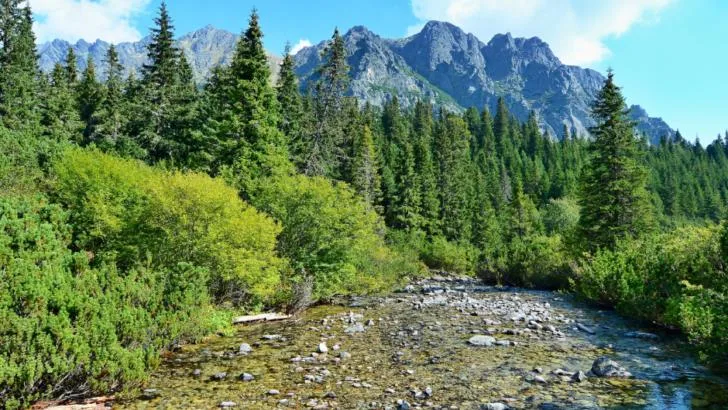
Incorporating longer hikes into my routine has transformed not only my body but also my mindset. It has taught me the value of perseverance, patience, and the rewards that come from stepping outside of my comfort zone. Each time I extend my hiking duration, I gain a newfound appreciation for my body’s capabilities and a deeper connection with the natural world around me.
So, whether you’re starting with shorter hikes or already venturing into longer ones, challenge yourself to gradually increase the duration. Embrace the journey, soak in the beauty of the trails, and relish in the transformative power of hiking. As you hike for longer periods of time, you’ll witness the positive impact it has on your physical well-being and emotional state, ultimately bringing you closer to your goal of shedding that belly fat and embracing a healthier, happier you.
Combine Hiking With Other Forms Of Exercise
In my personal quest to shed belly fat and embrace a healthier lifestyle, I’ve discovered that combining hiking with other forms of exercise is a key ingredient for success. While hiking alone is a fantastic calorie-burning activity, incorporating a diverse range of exercises into my fitness routine has accelerated my progress and brought me closer to my ultimate goal.
Strength training has become an essential part of my regimen, as it helps build lean muscle mass and boosts my metabolism. By engaging in exercises such as weightlifting, bodyweight exercises, or resistance training, I’ve witnessed the transformation of my physique. Not only has strength training enhanced the effectiveness of my hikes, but it has also played a vital role in toning my abdominal muscles, leading to a more defined and sculpted belly.
Cardiovascular exercises, in addition to hiking, have further contributed to my belly fat loss journey. Activities like running, cycling, or swimming elevate my heart rate and increase my calorie burn, ensuring that I maintain a consistent calorie deficit. By incorporating cardio sessions into my weekly routine, I’ve noticed significant improvements in my overall fitness level and witnessed the stubborn belly fat gradually melting away.
Flexibility exercises, such as yoga or Pilates, have added a remarkable dimension to my fitness journey. These practices not only promote flexibility and mobility but also enhance core strength and stability. By cultivating a strong core through these exercises, I’ve experienced improved posture, reduced lower back pain, and an overall sense of balance and harmony in my body.
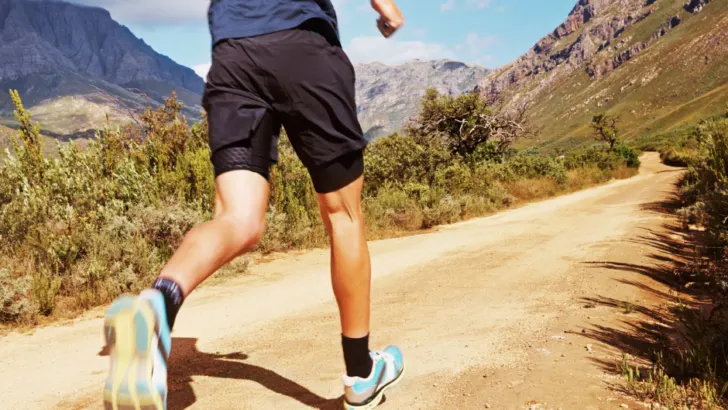
Combining hiking with other forms of exercise has not only accelerated my belly fat loss but has also brought variety and excitement to my fitness routine. By diversifying my workouts, I’ve been able to target different muscle groups, prevent plateaus, and maintain a high level of motivation. It’s incredible how these complementary exercises work in synergy to maximize the effectiveness of each hiking session, ultimately propelling me closer to my fitness goals.
While hiking is a powerful tool for burning calories and losing belly fat, incorporating other forms of exercise elevates its impact. By integrating strength training, cardiovascular exercises, and flexibility routines into my fitness regimen, I’ve experienced a comprehensive transformation in my body and mind.
Remember, consistency and dedication are key. With a well-rounded approach that combines hiking with other exercises, you’ll witness remarkable results on your belly fat loss journey and embark on a path to a healthier, fitter, and more confident you.
Conclusion
In conclusion, hiking can be an effective way to burn overall body fat, including belly fat. While it may not specifically target the fat in your abdomen, it can contribute to weight loss and a healthy lifestyle when combined with a balanced diet.
Carrying additional weight on your back during a hike can increase the number of calories burned, making it a more intense workout. Using trekking poles can also turn your hike into a total body workout, engaging your arms and upper body for extra calorie burn.
Hiking is a great way to burn calories and belly fat, and it’s also a great way to enjoy the outdoors and improve your overall health. If you’re looking for a way to lose belly fat, hiking is a great option. For more information on how hiking can help you burn calories and belly fat, please see “Is Hiking an Aerobic Exercise: A Clear Answer?”.
It’s important to note that the body does not burn fat from one specific area. Therefore, it’s essential to focus on losing fat overall through a combination of cardio workouts, strength training, and a healthy diet.
Overall, hiking can be a fun and enjoyable way to improve your physical health, including burning belly fat. Incorporating it into your exercise routine, along with other forms of physical activity, can help you achieve your weight loss goals and maintain a healthy lifestyle.
Elevate your hiking skills and broaden your knowledge by immersing yourself in our collection of expert tips and techniques. Uncover invaluable insights on conquering a multitude of hiking challenges, ranging from tackling steep ascents to navigating river crossings, all through the captivating content of our carefully curated hiking blogs.
Frequently Asked Questions
How many calories can you burn while hiking?
Hiking is a great way to burn calories. The number of calories you burn while hiking depends on several factors, such as your weight, the terrain, and the intensity of the hike. On average, a person can burn between 400 and 700 calories per hour while hiking.
Does hiking help with weight loss?
Yes, hiking can help with weight loss. Hiking is a great way to burn calories and improve your overall fitness level. It can also help you build muscle, which can boost your metabolism and help you burn more calories throughout the day.
How long and how often should you hike to see weight loss results?
To see weight loss results from hiking, it is recommended that you hike for at least 30 minutes to an hour, three to four times per week. However, the exact amount of time and frequency will depend on your fitness level and weight loss goals.
What are the health benefits of hiking?
Hiking has many health benefits, including improved cardiovascular health, increased muscle strength and endurance, improved balance and coordination, and reduced stress levels. It can also help improve your mood and mental health.
Can hiking improve body composition?
Yes, hiking can help improve body composition by increasing muscle mass and reducing body fat. Hiking is a weight-bearing exercise, which means it helps build and strengthen bones, muscles, and connective tissue. It can also help improve your body’s ability to burn fat.
Is hiking a good form of cardio for weight loss?
Yes, hiking is a great form of cardio for weight loss. It is a low-impact exercise that can be done at various levels of intensity, making it suitable for people of all fitness levels. Hiking can help you burn calories and improve your cardiovascular health, which can lead to weight loss over time.
